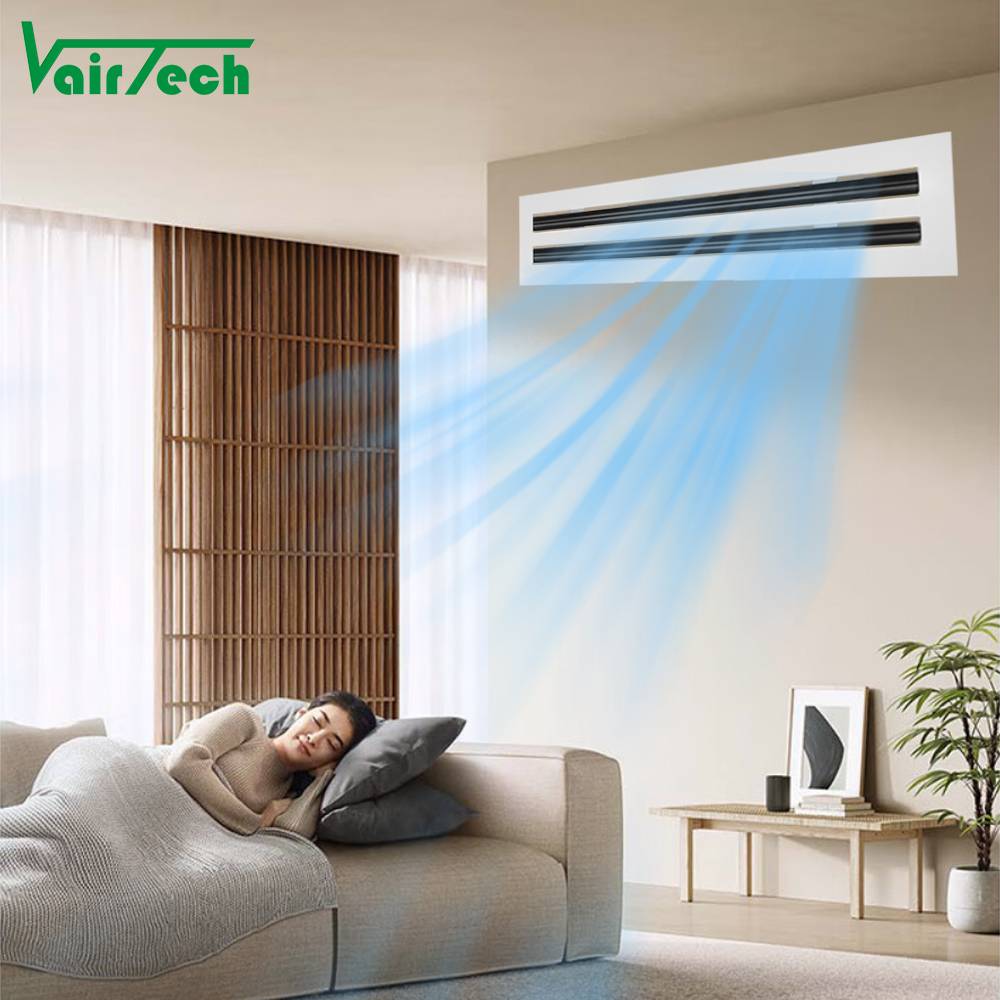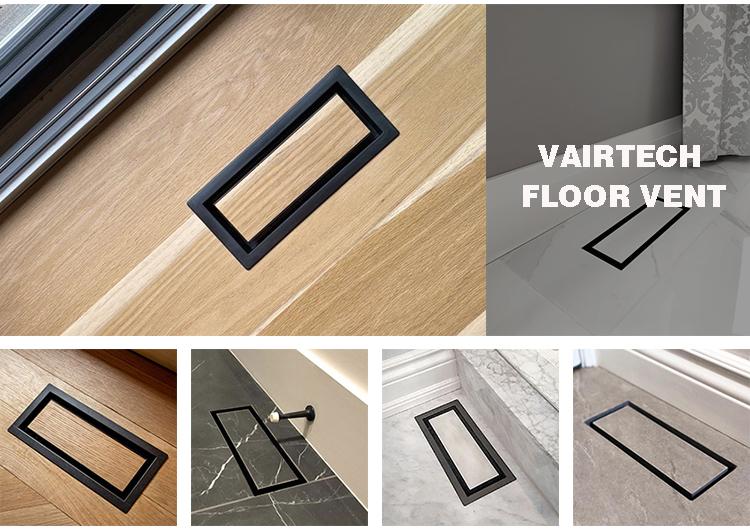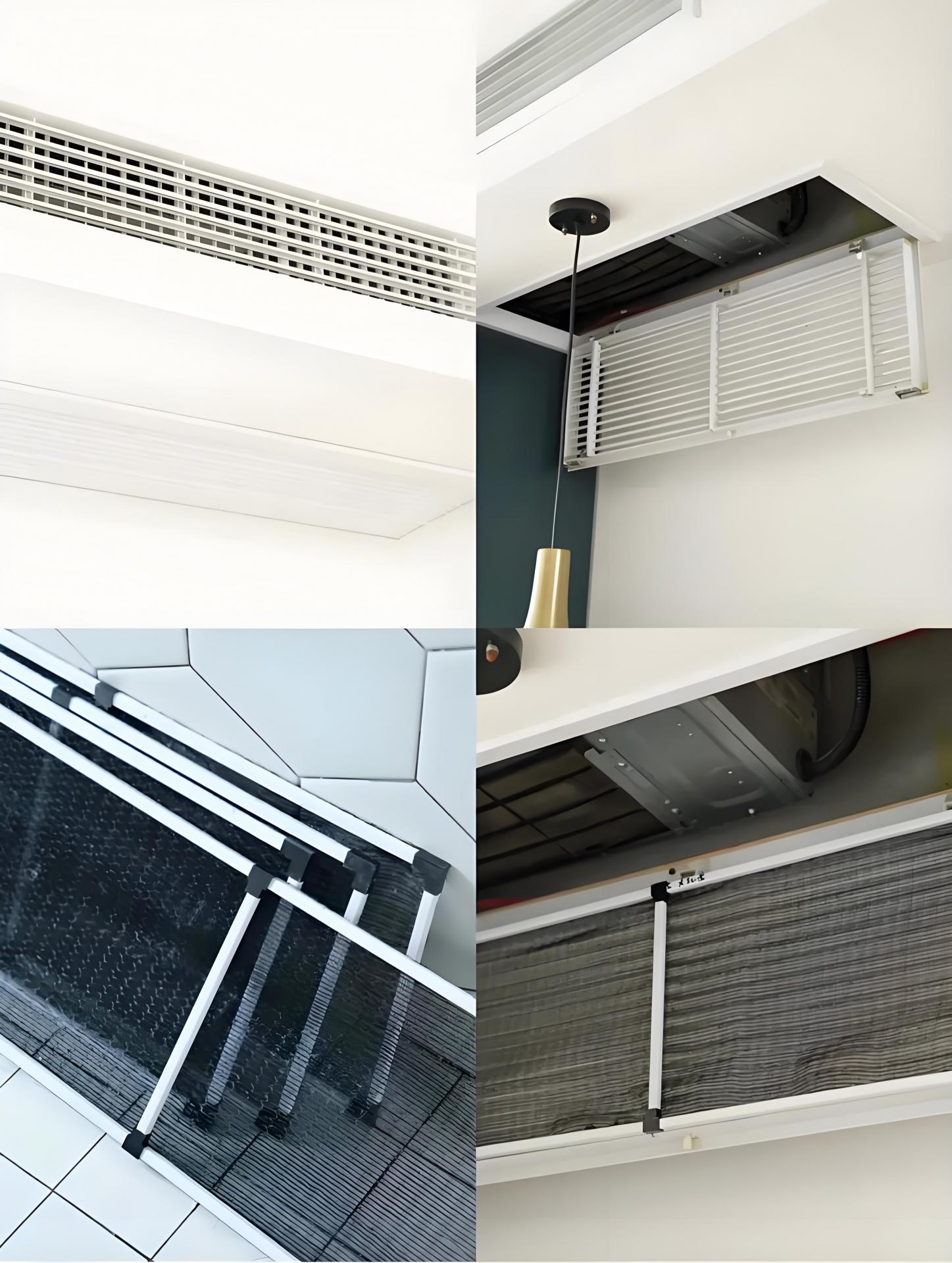Ventilation air grille diffuser
air vent manufacturer since 2002
 Vairtech
Vairtech  2025-06-05
2025-06-05
If you’ve ever wondered if the air vents in your home need to be where they are, the likely answer is yes. Here we’ll discuss the pros and cons of having air vents high or low, and why the two types are needed.

Both vents are needed to create sufficient air circulation for ample heating and cooling. Without the supply and return vents, rooms develop uneven temperature and air pressure zones which affects your overall comfort and efficiency of the HVAC system.
However, if you notice a room only has a supply vent, look at the bottom of the door — chances are it has a gap at the bottom. The gap is designed to allow air to flow out of the room to a return and not create an uneven pressure and temperature area.
The supply air vent is responsible for supplying or bringing conditioned air from the HVAC unit into a room. The return vent pulls or sucks flat air back into the HVAC to be reconditioned, starting the air cycle again.
You likely have both covering the two types of vents. Air registers are found on the supply vent; they have a damper or moveable flaps to allow full or partial airflow. Air grills are on the return vent and get their name from the resemblance to cooking grill grates.
If you want or enjoy more heat than cooling, floor vents are naturally more efficient for heat since heat rises.

On the other hand, if you prefer or use more cooling because of the geographic climate, ceiling vents are more efficient at cooling than their floor counterparts.

No. Each HVAC system is designed to heat and cool a particular square footage and delivers a set volume of conditioned air to meet the requirements. When you close these vents, the HVAC continues to deliver the set amount. This causes the air pressure inside the ductwork to build, possibly causing the ducts to warp or leak which reduces the efficiency and comfort. And, without air going into the return vent, the HVAC works harder than necessary to pull flat air back in, which causes wear and tear.
While you can organize the air vents based on the geographic climate, or the most efficient suggestion of the time, it all comes down to your personal needs and desires. Heating and cooling a home varies widely but you can find what works for you by working with an HVAC professional.
Try to keep at least one foot of clearance around all sides of the supply and return vents, regardless of where they’re placed. Pay attention to how taller objects, such as bookcases, fit with the wall and some ceiling vents.
A clogged air filter reduces the amount of air flowing from the HVAC system to the vents. Remember to change the air every two to three months, or sooner if you live in a dusty environment.

When your HVAC system is in good shape, it provides conditioned air through the vents on demand, no matter where the vents are located. Regular maintenance allows a trained technician to inspect the system from top to bottom and take a proactive approach to any potential issues rather than reacting and repairing.
No matter your personal preference for vent location, it’s always a good idea to keep up with regular HVAC maintenance so your home stays comfortable year-round.